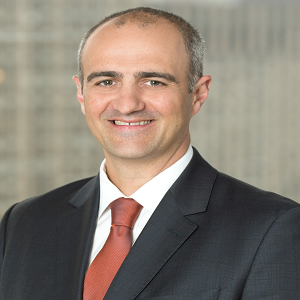"For employers, unhealthy employees pose risks not only to the current workforce, but also to potential hires and possibly future leaders of the business.”
The resting heart rate for the average adult is somewhere between 60 to 100 heart beats per minute. Lower than 60 beats per minute indicates an individual, such as an athlete, with above average health. More than 100 beats per minute signifies a person with lower than average health—the type of man or woman one sees in almost every workplace, in every city from Bangkok to Nairobi. Modern society has made being unhealthy devastatingly easy.
Unhealthy employees in growth economies pose risks not only to themselves and to their companies—but to the economic viability of their communities as they seek to compete in the global marketplace. Unhealthy employees take more sick days, require more costly health benefits and are generally less productive and energetic than their healthy counterparts.1 The need for healthy, productive employees is not only a concern for employers; it is increasingly becoming an issue among the employees themselves.
As middle classes continue to proliferate in regions from Asia Pacific to Latin America, employees are demanding better working conditions and healthier lifestyles from their professional environments. However, workforces in growth markets continue to gravitate toward megacities with more than 10 million inhabitants—such as Mexico City, Mumbai, Sao Paulo and Shanghai. These population shifts are placing increasing pressure on the resources of these urban areas—exposing employees to unhealthy levels of pollution, sedentary/inactive lifestyles associated with extended commutes and limited access to safe and secure living conditions.
Value the Health of Individual Employees
Growth economies are only as strong as the people that comprise them. The success of a business is traditionally measured by profits and losses, customer acquisitions, monthly sales and other data that shows where value is being lost or created. Success, however, is directly impacted by the productivity—and health—of a business’s employees. Every individual employee contributes to the success or failure of entire teams, departments and divisions. Each person counts. Businesses must evolve beyond the tendency to treat employees as a collective workforce of anonymous faces and job titles, and see them as individuals with specific skills, personalities and unique health and well-being needs—both physical and emotional. Simply stocking healthy snacks in the kitchen or giving an employee a birthday card isn’t an effective health initiative or psychological boost for most employees.
Businesses in growth economies gain a competitive edge when they employ workers who feel appreciated as individuals. Attending to the health and well-being needs of every employee (and their loved ones) is a powerful means of communicating respect. Providing employees with access to benefits that genuinely serve their needs and sense of purpose will strengthen their connection to, and appreciation for, the surrounding professional community. In fact, that connection is no longer limited to isolated businesses or economies. A new generation of highly educated workforces throughout growth economies is leveraging unprecedented access to digital technologies—and connectivity—to drive demands for higher standards in the workplace. In particular, developed economies are leading a global conversation about universal employee concerns and workplace expectations—including better health and well-being services, financial wellness programs, professional development and educational support opportunities, and work-related risk management practices.
Businesses regularly scale to meet increased consumer and client demands, but often neglect to provide individual employees, within expanding workforces, basic support for a healthy work environment (e.g., adequate work stations—ergonomic and supportive chairs, proper monitors, for instance). Issues like unhealthy workspaces can be easily rectified with individual attention. Employers must address these critical details. The negative impact unhealthy employees have on productivity levels, efficiency and the bottom line are well documented.2 For employers, unhealthy employees pose risks not only to the current workforce, but also to potential hires and possibly future leaders of the business.
First Impressions Impact the Hiring Process
Today, job candidates interview the company before they agree to being interviewed themselves. Before a diligent job candidate arrives for an interview, they have already researched the company’s website, studied the company’s mission statement and business philosophy—including its commitment to global diversity and inclusion policies—read the CEO’s blog posts and analyzed the benefits offered to individual employees at company headquarters and in local offices. As part of this research, it’s likely the candidate has even read through company reviews and ratings—feedback from both customers and current/former employees—via various online resources.
Smart businesses know that talented professionals have high sensitivities regarding situational awareness, and prepare accordingly. Businesses that do not invest in making a positive first impression with job candidates will lose them, and their skills and talents, to competitors. If a highly desired job candidate walks out of the elevator and passes rows of cubicles lined with unhealthy and tired employees, a sense of concern immediately overtakes them. The health of a business’s employees could, understandably, be a direct reflection of their work-life balance and workplace environment – maybe even their health benefits. If a company’s workforce appears to be overstressed, overworked or uninspired, then that top job candidate will eliminate the potential employer before the first handshake. The impact ‘unhealthy’ employees have on the nuances of employer branding and recruiting are less quantifiable than other workforce metrics—but no less important. Current employees offer future employees a window into their futures.
Rediscovering Balance in the Modern Workplace
Workforces and employers in growth economies are struggling to adjust to evolutions in technology and modern work-life balance paradigms. The era of our personal and professional lives being separate states of existence are gone. Digital devices and communication technologies have erased the lines that delineated when and where a person worked. The result is a confusing amalgamation of untethered expectations from bosses and spouses, children and coworkers, personal time and work-related hours. The modern-day employee is trapped in a vortex of demands that are no longer contained by time or place. Unsurprisingly, employees everywhere are suffering, both physically and emotionally, from this imbalance. Many employers in growth markets, thankfully, are finally recognizing this widespread problem. Business leaders in growth markets are implementing real strategies to make their employees healthier, happier and more productive.
Savvy employers acknowledge that healthy pursuits and balanced lifestyles are not personal matters solely pursued outside of business hours. Most employees spend the majority of their waking hours at work, and it is during these hours that employers can offer the most effective programs to achieve good health. In China, Huawei and Perfect World, the winners of Mercer China’s 2016-2017 China Healthiest Company survey, offer employees groundbreaking in-house healthcare programs. The amenities include dedicated nurse practitioners, medical services centers (that provide blood screening and other tests) and meditation sessions designed to decrease stress and increase wellness. The future of healthy employees begins with workplaces that prioritize healthy activities as an important part of an employee’s work schedule. In Latin America, 1 in 3 companies already provide well-being programs for their workforces.4 In Mexico, American Express has implemented health and well-being centers that provide care and support resources to employees; and, in Brazil, employers like Schneider Electric have received recognition and awards for their wellness programs and diversity and inclusion efforts.
An Era of Work and Wellness
Effective growth economy workforces of the future will have employees who feel healthy on every level. Reduced absenteeism, lower healthcare-related expenses and increased productivity levels are all obvious reasons to offer in-house wellness resources and programs. In terms of costs and benefits, the math is easy. However, the human impact is invaluable. Employees are a business’s most important investment, and future employees can easily see if an employer is currently investing in the well-being of their people. For today’s top talent, the health of a company’s existing employees can be a deal breaker.
Technology will drive the future of health, especially in the growth economies that quickly embrace digital transformation. Currently, in Brazil there are more than 200 startups developing digital solutions in health management and services.5 Modern devices can constantly monitor our heart rates, stress levels and overall wellness. Both employers and employees will be able to use real-time data to create optimum working conditions and schedules for employees working in a world without boundaries. Encouraging workers to eat better, exercise more and stimulate their minds and creativity through cerebral exercises is critical to building strong employer brands that attract and retain top talent. Companies must offer employees a future without back problems, mental illness and heart rates over 100 beats per minute.
1 Healthy Workforce
https://www.cdcfoundation.org/businesspulse/healthy-workforce-infographic
2 The Portion Of Health Care Costs Associated With Lifestyle ...
https://journals.lww.com/joem/Abstract/2015/12000/The_Portion_of...
3 Who Are China's Healthiest Employers? – Thrive Global – Medium
Yan Mei - https://medium.com/thrive-global/who-are-chinas-healthiest-employers-72af8c1215b0
4 Health Techs
https://insights.liga.ventures/healthtechs/
5 Health Techs
https://insights.liga.ventures/healthtechs/










